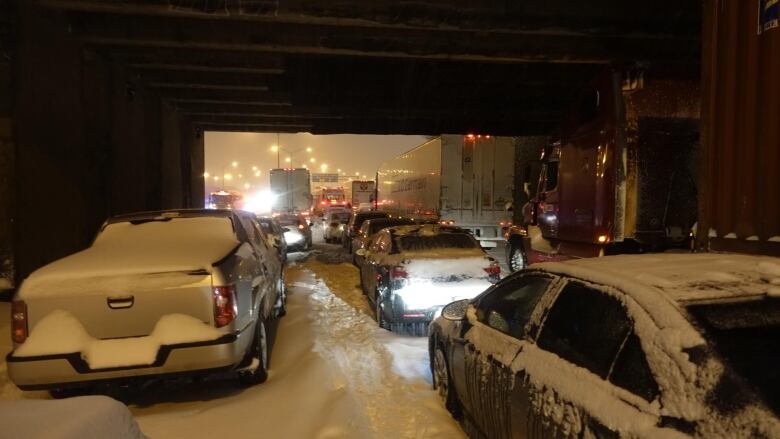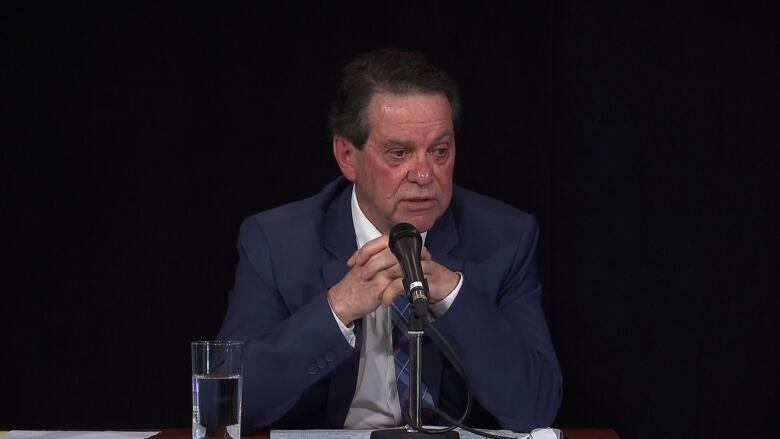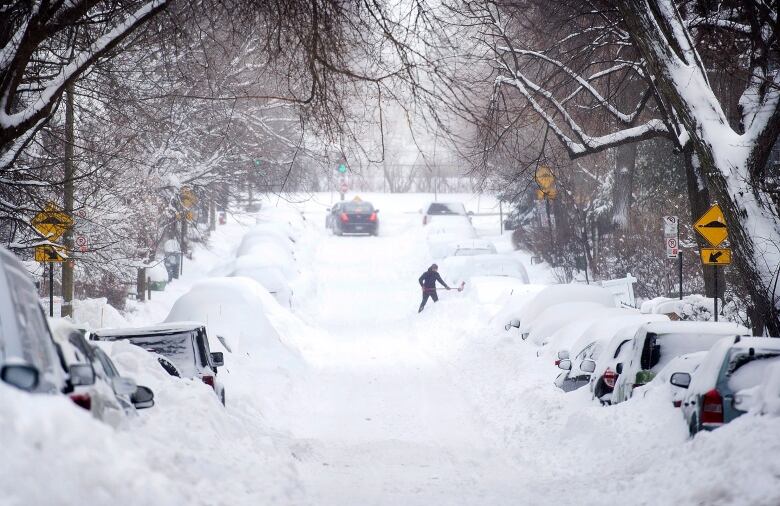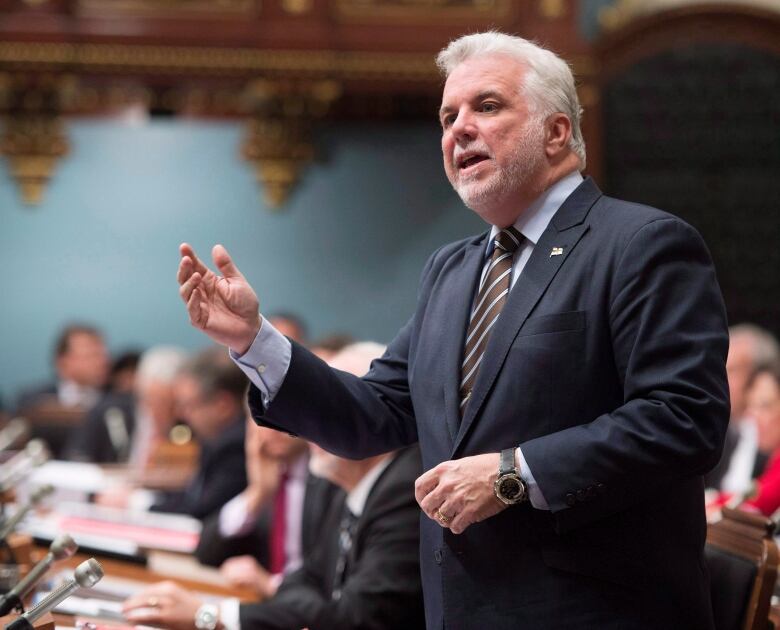Highway 13 snowstorm probe faults 'serious organizational shortcomings' at MTQ, SQ
Alert systems in place at Quebec's Transport Ministry, provincial police didn't work, says lead investigator

The mass stranding of more than 300 people on Highway 13during a snowstorm in March was in large part the product of an inability by Quebec's Ministry of Transport (MTQ) and provincial police to grasp the true scope of the unfolding crisis, a report into the situation says.
Released today, Florent Gagn, who was assigned by theQuebecgovernment to lead an investigation into the events, blamed "serious organizational shortcomings" and communication issues attheSretduQubec and MTQ, which wereresponsible for the highway.
"Their surveillance and alert systems didn't work," Gagn said in a news conference. "It wasn't a lack of resourcesor having the right policies in place they have it all."
Heavy snowand two disabledtractor trailerstrapped motorists on the highway, some for up to 12 hours. It was 4:30 a.m. before Montreal firefighters arrived at the scene to help stranded motorists.

Quebec Premier Philippe Couillard appointed Gagn, a former deputy transport minister and one-time head of the SQ, to lead an independent probe the next day.
Information gathering failure
Gagnattributed part of the problem to the inability of Montreal's traffic control centre, an MTQ-runoperations centre thatmonitors traffic in real-time across the Montreal region via a network of cameras, to get and process information about the mounting problem.
- TIMELINE |How did 300 cars come to be trapped overnight, on a highway, in the middle of a snowstorm?
"Information didn't circulate between the various players who are normally feeding the centre," Gagn said.
"MTQ patrol vehicles couldn't get around easily and couldn't relay information back to the centre same thing for Sret du Qubec officers."
Communication breakdown
A change in the SQ's communications system prior to the storm also meant the MTQ didn't have access to police radio communications at the time.
Montreal's traffic control centre, known as the CIGC,also did not havemanagers or extra personnel in place that night, despite the forecasted storm.
"Operators at the centre were swamped that night with emergencies and their attention wasn't always on the screens around them," Gagn said. "It meant they didn't realize until late at night the true pictureof what was happening."

Without managers to oversee the situation, the understanding of the extent of thesituation was delayed and information wasn't passed up through the chain of command until late in the evening.
"At a certain point in the evening, we were no longer dealing with just a snow-clearing operation or a traffic situation, but people needed to be rescued from their cars," Gagn said.
"Managers at the centre would be the ones to initiate that switch, but there were no managers in place."
The employee in charge of the centre's operators notified management at 9:40 p.m. about the urgency of the situation on Highway 13,three hours after a problem was first reported along the snow-choked artery.
MTQ absent at key moment
The operator'ssuperior then sent an alert via text message to 12 people involved in emergency planning with the MTQ, but received only two replies.
Soon after, the same superiorsent an alert to 40 people, including an associate deputy minister at the Transport Ministry.
"Faced with the fact no one was taking charge of the problem in a systematic way at the MTQ, the operators were left to their own devices," he said.

"Think about a hospital you can't ask the operator to solve a medical emergency."
SQ didn't register urgency of situation
The SQ faced similar organizational deficiencies, Gagnreported, including communications channels within the police forcethat didn't work.
Calls coming into the SQ fromthe public indicated that the situation was becoming urgent, but that urgency was downplayed and it wasn't deemed necessary thatthe senior officer in charge be alerted.
An SQcontrol centre that receives calls and is responsible for monitoring the area also dropped the ball, Gagn said.
The centre labeled the situation in such a way that automatic cellphone alerts to senior officers were not activatedand the kind of resources such alerts could summon were not deployed.
"As a result, all the subsequent hundreds ofcalls throughout the night did not set off thatkind of automatic alert," Gagn said.
In the end, the SQsenior officer in charge was only notified of the crisis around 3 a.m. nine hours after the situation was first reported and a rescue operation involving the Montreal fire department was finally initiated.
"It was late at that point too late, in fact ... it should have happened around 10 p.m. or 11 p.m. at the latest," Gagn said.

Recommendations
The report provided 28 recommendations for improvements, starting with a full review of the organization and functions of theMTQ-run CIGC in Montreal.
"It's a jewel of the ministry, and we can't just let it go," Gagn said. "We have to ensure that the right personnel are there, the computers work ...and they are able to collect information and distribute it."
The report also recommends that the structure of the MTQ's alert systemsbe reviewed because while policieswere in place, theyweren't used that night.
"You can have the best policies in place, but the people responsible for enacting have to be aware and understand there's work there that needs to be done on that human level," said Gagn.
As forthe SQ, the report recommends the creation of a centre responsible for surveillance and operations control attached to the force's headquarters. The centre should also have direct links to the CIGCand the Ministry of Public Security.
In a communiqu Friday, the SQ said it has already established the surveillance centre and is in the process of conducting its own administrative inquiry into the events that night on Highway 13.
Further disciplinary action may follow that inquiry, the force said.












_(720p).jpg)


 OFFICIAL HD MUSIC VIDEO.jpg)
.jpg)



























































































